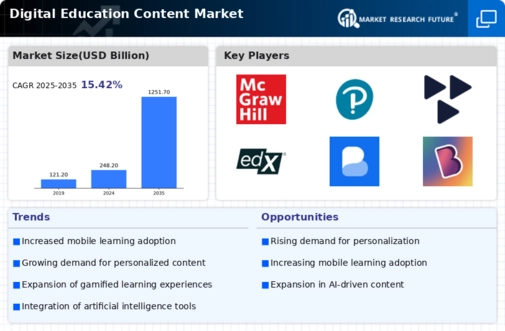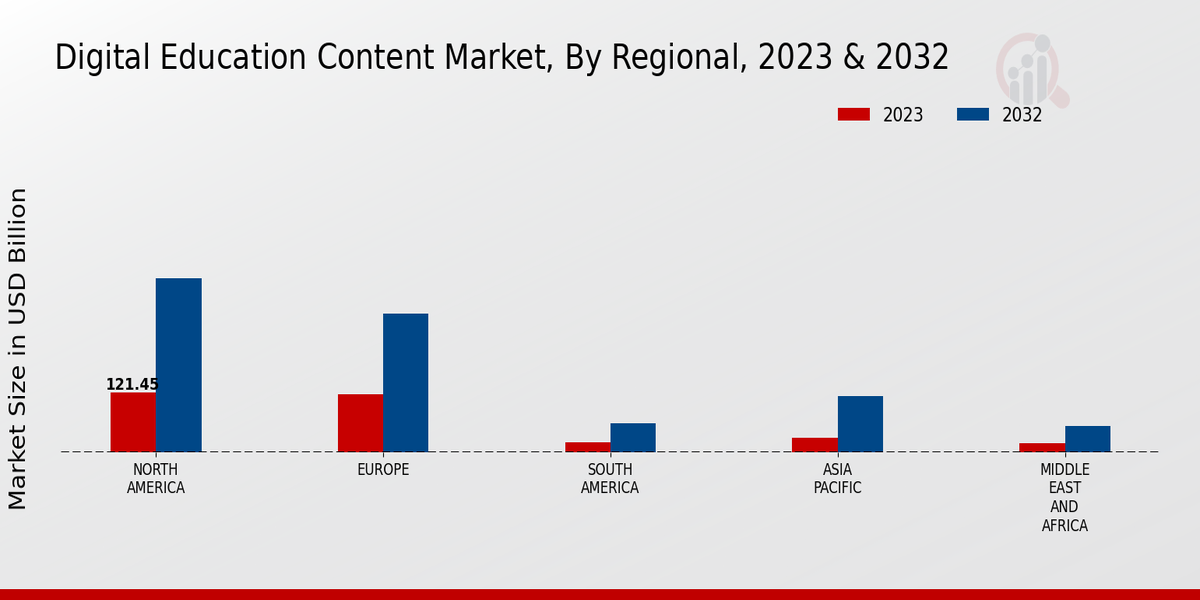Digital Education Content Market Summary
The Global Digital Education Content Market is projected to grow from 248.2 USD Billion in 2024 to 1251.7 USD Billion by 2035.
Key Market Trends & Highlights
Digital Education Content Key Trends and Highlights
- The market is expected to experience a compound annual growth rate of 15.85 percent from 2025 to 2035.
- By 2035, the market valuation is anticipated to reach 1251.7 USD Billion, indicating substantial growth potential.
- In 2024, the market is valued at 248.2 USD Billion, reflecting a strong foundation for future expansion.
- Growing adoption of digital learning tools due to increasing demand for personalized education is a major market driver.
Market Size & Forecast
| 2024 Market Size | 248.2 (USD Billion) |
| 2035 Market Size | 1251.7 (USD Billion) |
| CAGR (2025-2035) | 15.85% |
Major Players
McGraw-Hill, Pearson, Skillsoft, edX, Busuu, LinkedIn Learning, Byju's, Udemy, Udacity, Rosetta Stone, Duolingo, LingQ, Pluralsight, Drops, Coursera, Babbel, Memrise


















